Happisburgh: The Norfolk village crumbling into the sea
- Published
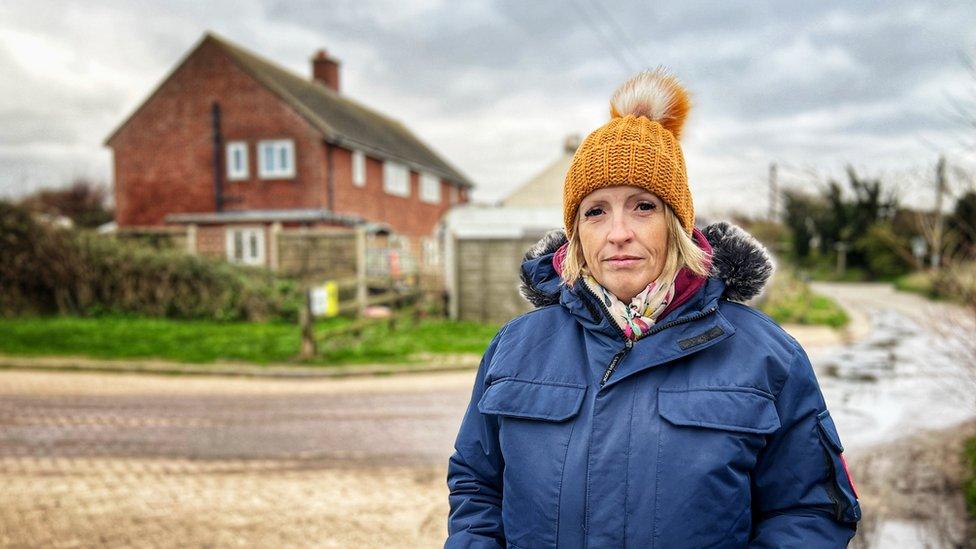
Nicola says she worries that her home will be even closer to the cliff edge every morning when she wakes up
In a small village on the north Norfolk coast, some residents are wondering how long they've got left in their homes before they are lost to the sea.
During the last 20 years, 34 homes have crumbled into the water in Happisburgh because of coastal erosion. Nicola Bayless thinks her home could be the next. She says she is devastated that she might have just spent her last Christmas there.
Along with East Riding in Yorkshire, Happisburgh and other parts of the north Norfolk coast have the highest number of properties at risk from coastal erosion in England.
"I'm angry and I'm heartbroken," Nicola says. "My children have grown up here, my husband died here and my parents lived here before they died.
"I'm so sad that things have come to this," the 47-year-old nurse says.
When Nicola, who also works as a fitness instructor, moved to Beach Road 18 years ago, her three-bedroom semi was in the middle of the street.
But punishing weather conditions linked to climate change have eroded so much of the village's soft sandy rock that her house is now the last one before the cliff edge.
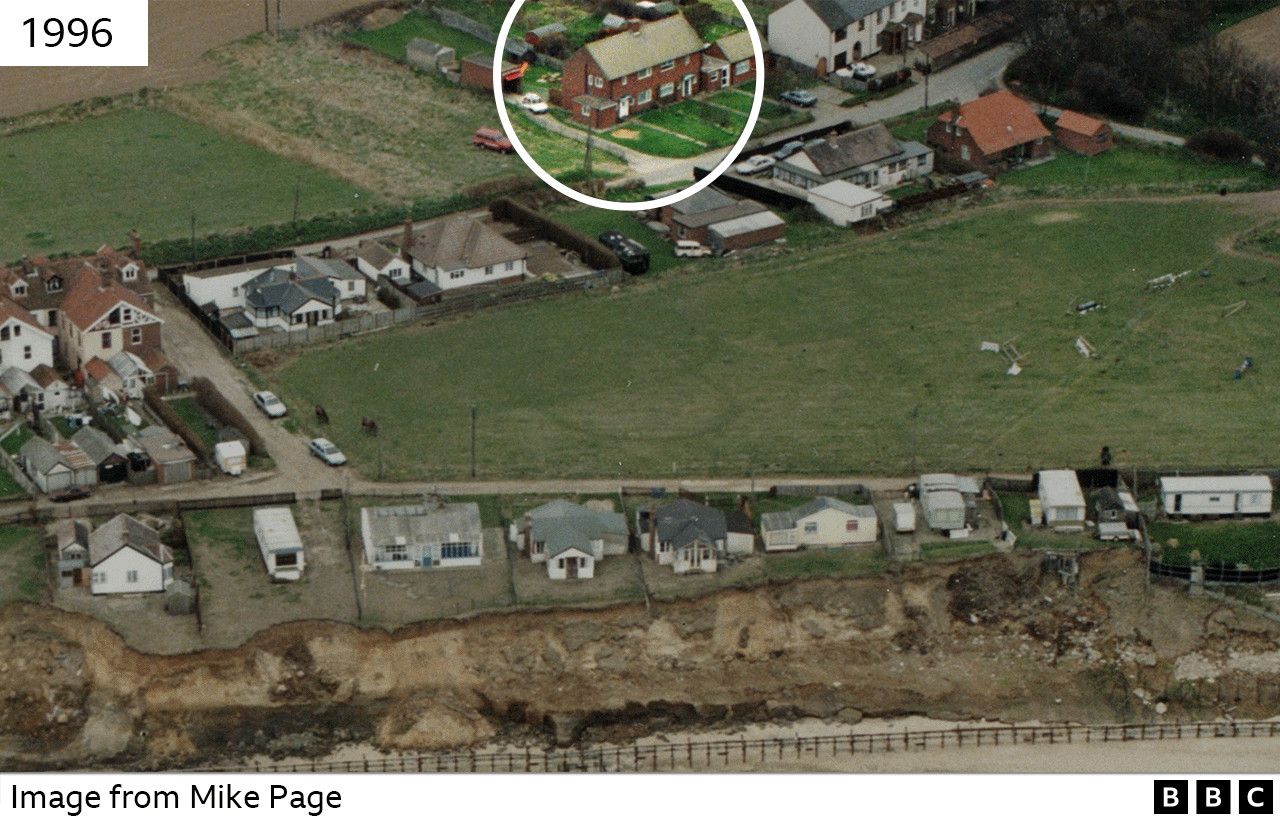
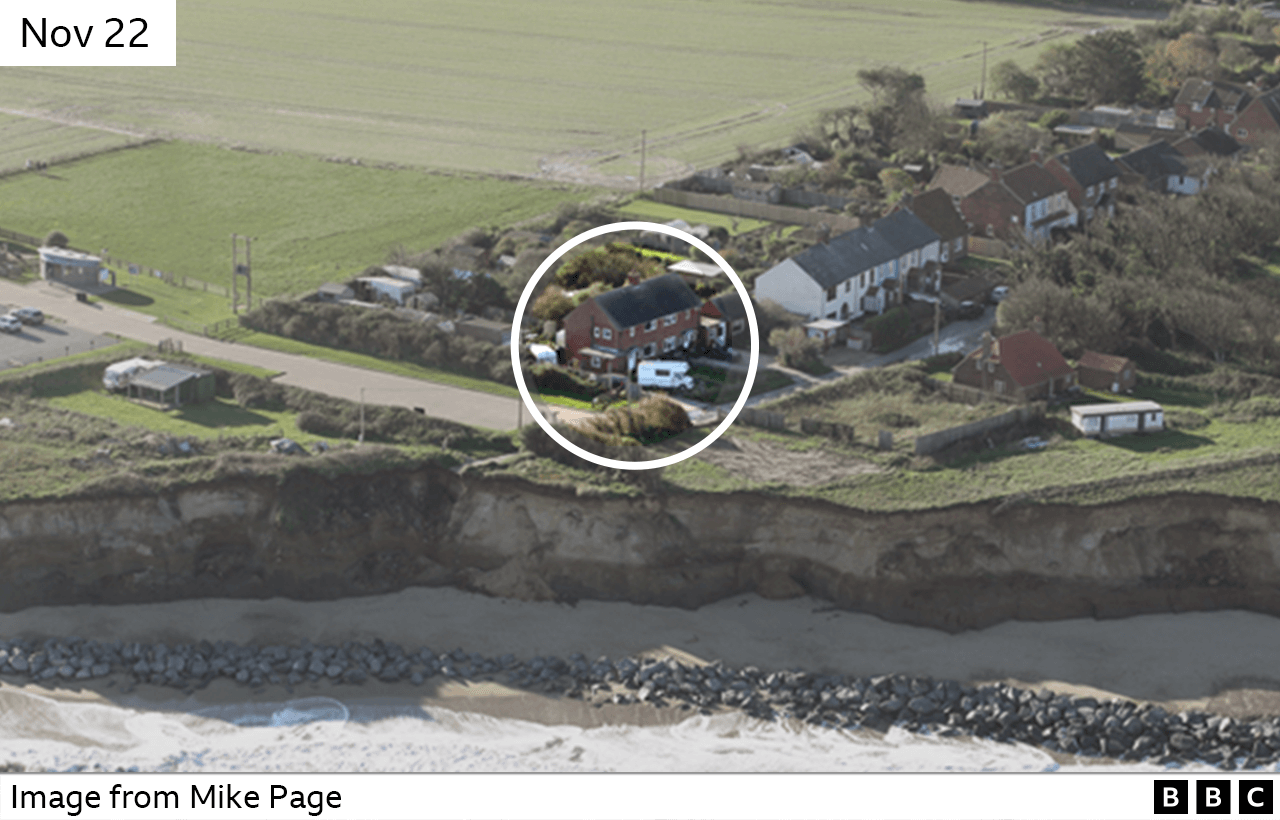
Her neighbours have been forced to abandon their homes as the cliffs beneath them crumbled. Nicola knows it is only a matter of time before she also has to leave.
"I walk out of my door and I can see the cliff. I can't stick my head in the sand about this any more. It's really frightening," she says.
When Nicola's parents bought the house for £76,000 in 2000, a surveyor said it would be at least 150 years before the cliff eroded.
The mother-of-two believes it is now worthless. She will have to pay £2,000 for it to be demolished. The house opposite was valued at £1 before it was taken down.
She bought her siblings out of the house when their parents died and hoped she would be able to pass the property on to her daughters.
But the cliff edge is creeping ever closer. She will be forced to abandon it when it comes within 5m (16ft) of the edge.

Nicola lives in the last house before the cliff edge in Happisburgh
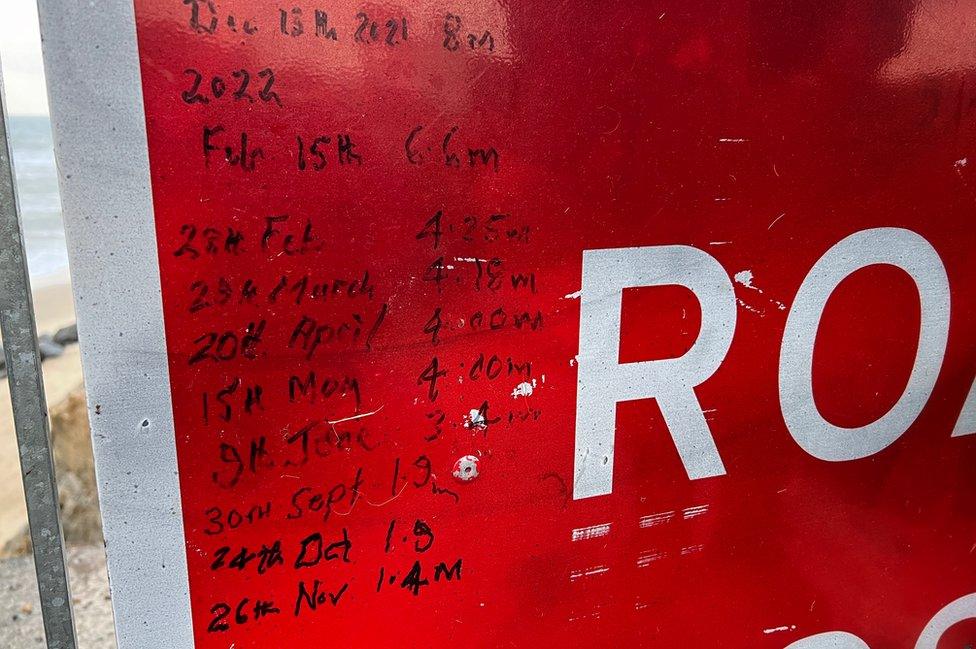
Beach Road residents keep track of how far the sign is from the cliff edge
"I'm really worried about the new year. We're going to have high tides and if we get a storm, the cliff edge will crumble even more. It's less than 50m (164ft) from my house now. In some parts, probably about 20m (66ft).
"I've started speaking to my daughters about moving and my youngest said she doesn't mind where we go as long as it's far away from the cliff and she won't have to worry about it every day."
Nicola plans to move to a bungalow in the village that she currently rents out to holidaymakers, but it means a loss of income and she worries it will also be at risk of coastal erosion in the future.
Happisburgh, home to about 1,100 people, is so susceptible to erosion because the cliffs are made from boulder clay which slumps when wet. The narrow beaches give less protection against the powerful waves, which increase in energy as they travel across the North Sea.
Authorities tried erecting wooden and concrete defences, but they fell into disrepair as the cost of maintaining them rose.
North Norfolk District Council used £3.2m to purchase the most at-risk homes for a reduced price under the Pathfinder Project in 2011, helping some people move further inland.
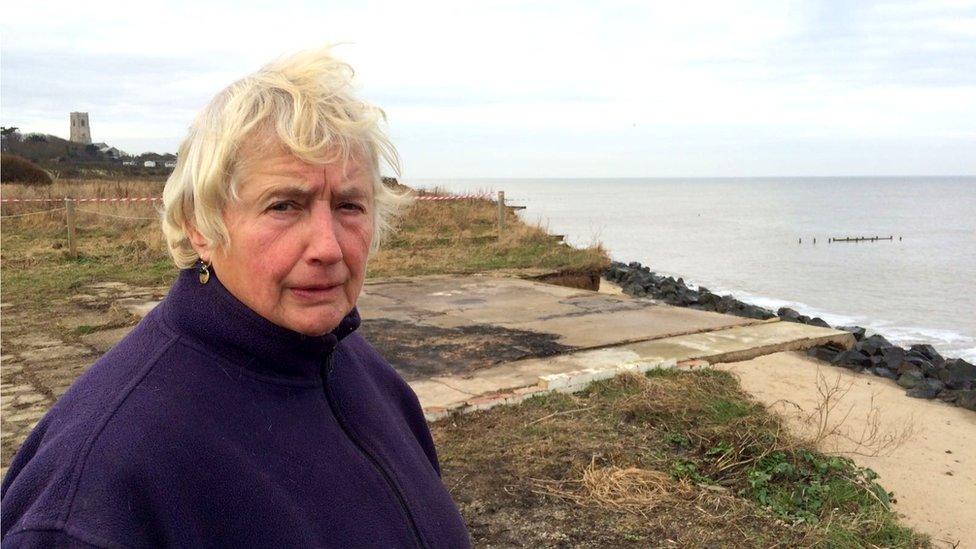
Nicola's neighbour Bryony believes Happisburgh should be defended rather than the approach of moving its residents further inland
Twelve homeowners were made an offer by the council and nine accepted. It also involved the relocation of a caravan park.
Bryony Nierop-Reading, 77, refused to leave her bungalow when she was offered £53,000 and it then fell into the sea in 2013.
She still lives on Beach Road, next door to Nicola, and her current house will suffer the same fate in the next few years.
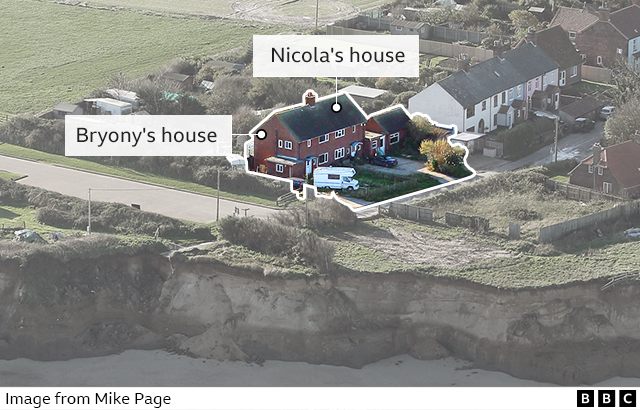
"Some people might think it was stupid but I made the decision to stay on Beach Road so close to the sea because I can't just turn my back on the problem. I worry about it every day, not just here, but around the whole coastline of the UK.
"I'm reminded of the problem every day. It focuses my mind and I am setting up an action group to defend Happisburgh. We can't just let it fall in the sea," she says.
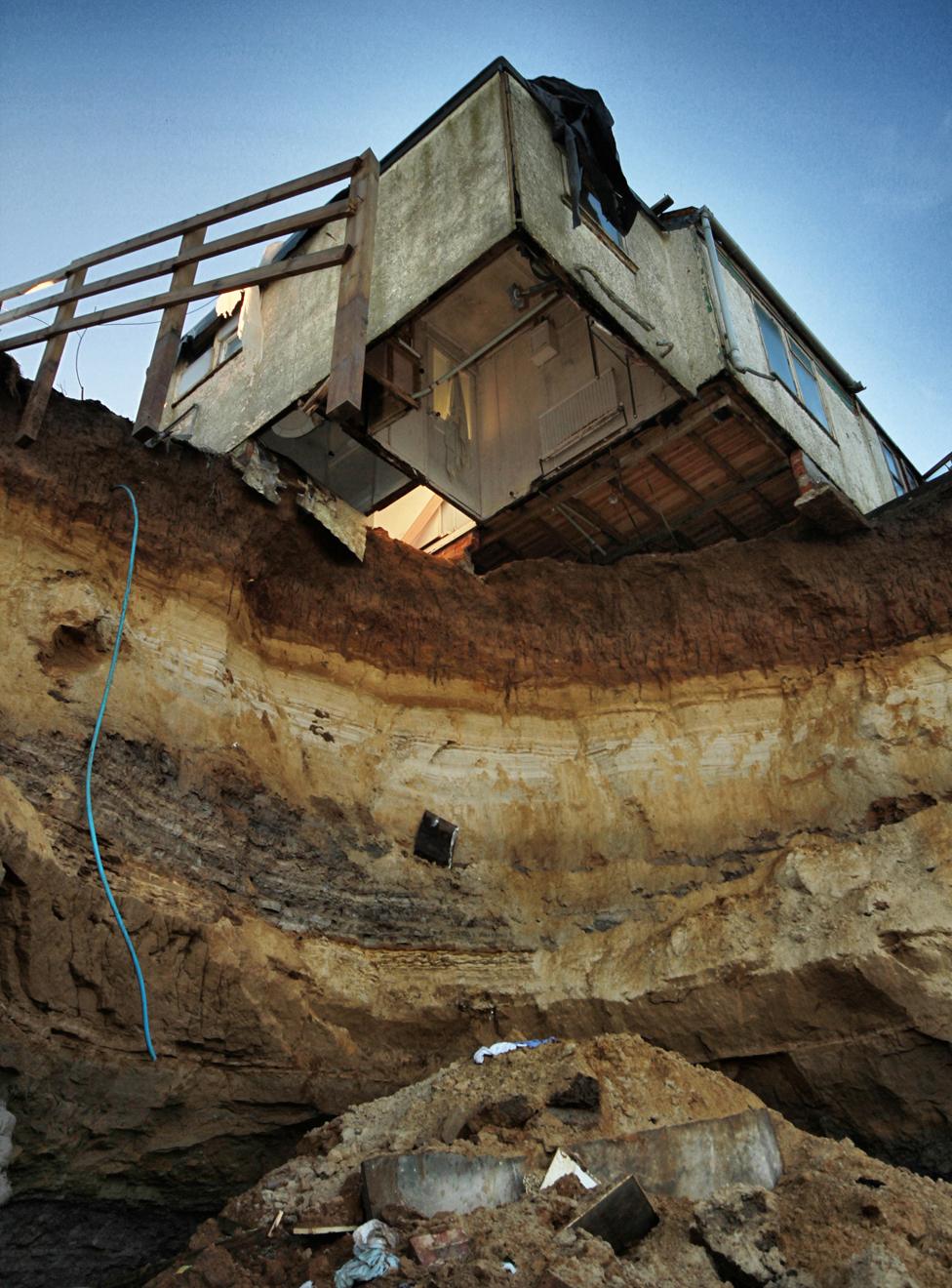
Bryony Nierop-Reading's bungalow fell in the sea during a 2013 storm
Happisburgh resident Malcolm Kerby was instrumental in setting up the relocation project in 2011. He started campaigning for better support for the community 23 years ago, after moving to the village to spend his retirement.
"It took over my whole life because it was one of those things you can't do by halves. Had we not managed to move those people away from the cliff, life would be very different today.
"Happisburgh is the best place in the world to live. There is a fantastic community which manages to exist with the sword of Damocles hanging over its head. The people here are really stoic," he says.
Malcolm, who is 81, felt frustrated the project had not been expanded, so he was "absolutely delighted" when the government announced the village would benefit from a £36m fund known as the Coastal Transition Accelerator Programme, external.
Cash from the programme will be shared between North Norfolk and East Riding.
The council will apply for funding for specific projects after a period of trialling has taken place. But the money will not be used on new defences, which has left some people in the village like Bryony very upset.
The government says Happisburgh "cannot sustainably be defended from coastal erosion". Instead it will help facilitate the "managed transition of communities from high-risk land".
"We recognise the threat from climate change and sea level rise, which is why we are investing a record £5.2bn over six years in around 2,000 flood and coastal erosion schemes to better protect communities across England," a spokesperson for the Department for Environment, Food and Rural Affairs said.

Malcolm Kerby helped organise the roll-back of homes at risk from the sea in 2011
The council said once all the funding was secure, it would be looking to work with communities, businesses and residents to develop plans, while also "exploring more immediate support to those residents affected".
Malcolm worries that the help will not come quick enough though and their houses could be taken by the sea before any details are ironed out.
Like Bryony, he is worried about other communities living on the coast who could be submerged by water in the years to come.
"We need to learn to adapt to climate change. If we could switch it off I would be all for that, but it is going to get worse and we need action now," he says.

Find BBC News: East of England on Facebook, external, Instagram, external and Twitter, external. If you have a story suggestion email eastofenglandnews@bbc.co.uk, external
Related topics
- Published27 February 2020
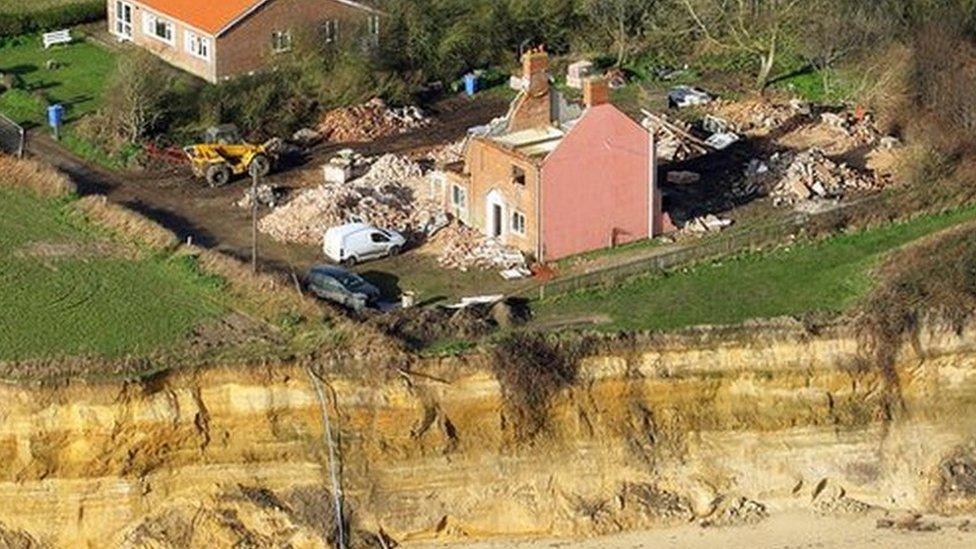
- Published6 February 2017
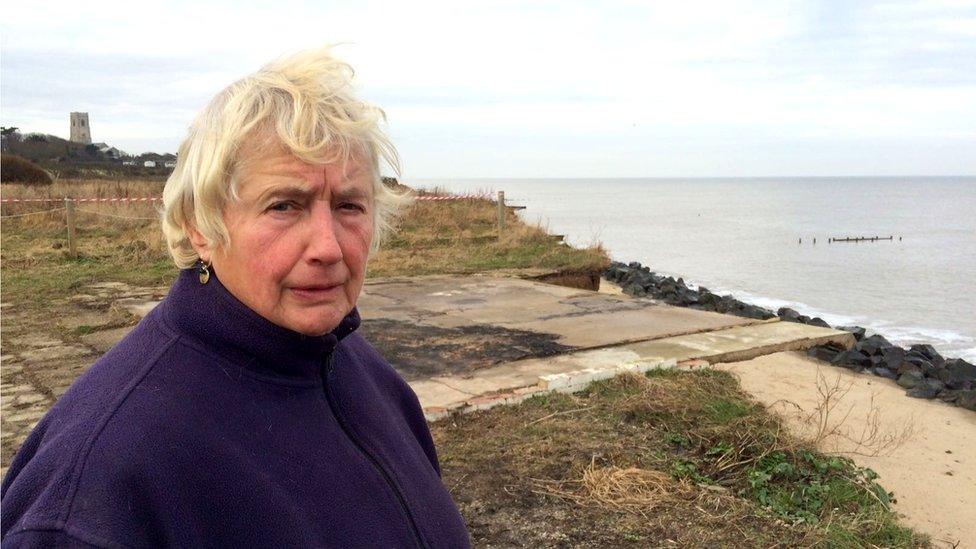
- Published12 December 2013

- Published15 June 2022
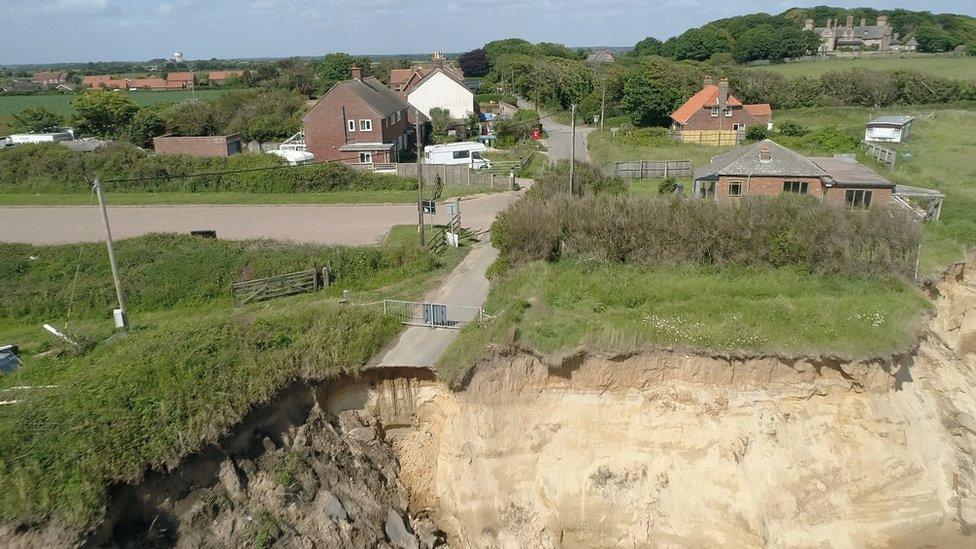
- Published14 January 2022
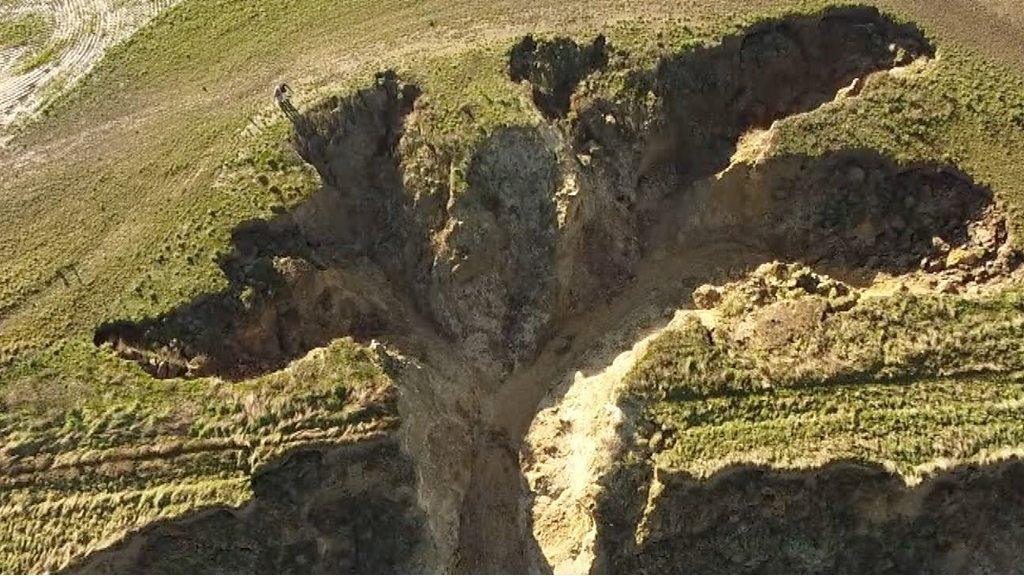
- Published11 December 2021

- Published18 July 2019
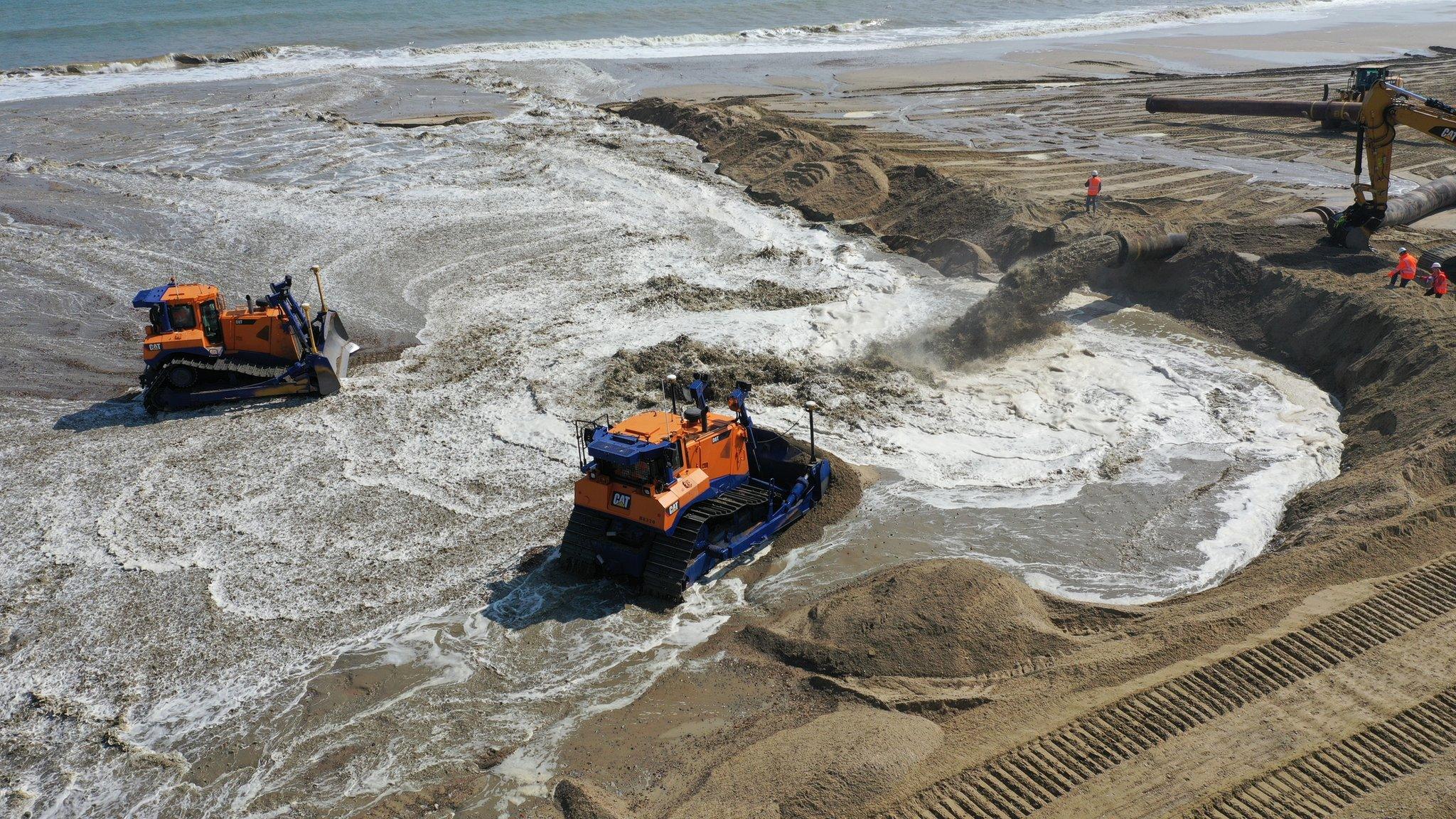
- Published29 December 2021
